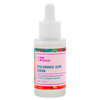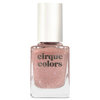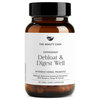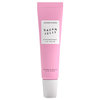
A new perfume can be heavenly and intoxicating. No other beauty product has quite that same power—the power to literally affect the air surrounding a person, the power to change someone’s perceived scent. A fragrance might remind you of dew on a freshly mown lawn during summer, a wooly sweater and roaring fire, the way a particular loved one’s head smells right out of the shower, or a garden full of jasmine. It can also smell synthetic, heavy, cheap, or shocking, reminding you of a funeral (hey, lilies), or sitting next to your grandma in church for hours on a stifling Sunday afternoon, or exactly, and cloyingly, like cotton candy.
But how do we get these perfumes that provoke such dramatic reactions of love and hate? By combining essential oils and chemicals, of course, but where do those ingredients come from? We all know patchouli when we smell it, but…what is it? What is vetiver? Where do we get it? This is the first part of a series in which we’ll explore the origins of commonly found ingredients in perfume, so we can nod knowledgeably when we’re told something has a base note of tuberose, or a heart note of ylang ylang. Here’s the story behind four of the most common fragrance ingredients.
**Vetiver **
Vetiver has a pleasant and really citrusy woodiness, and it’s fairly earthy and often used as a base for men’s colognes. And because of it’s long-lasting and cooling properties, vetiver is popular in summer scents.

Where it comes from: Vetiver is a tall grass native to South India, Sri Lanka, and Indonesia. The classic vetiver fragrance comes from the very long (20 to 30 centimeters!) roots, which are pulled and dried before the scent is extracted via steam distillation (the process of passing steam through plant material to slowly gather its resulting essential oils). Fun fact: vetiver has thus far proved impossible to recreate synthetically, unlike many perfume ingredients—and there’s no synthetic version of it available commercially for fragrances labs.
Patchouli
Instantly recognizable and difficult to describe, true patchouli is at once earthy and dark, and lighthearted and “green.” To me, patchouli smells like a sexy forest, college dorm rooms, and girls who wear lots of silver rings all at once.

Where it comes from: Judging from the scent, I assumed patchouli would be derived from some kind of wood or bark, but I was way off—it comes from the leaves of a bushy green plant found mostly in India. The leaves themselves give off a strong odor, and it’s from the leaves that we distill that classic “patchouli” scent we all know so well. Once a carefully guarded secret of the Silk Route in Asia, patchouli became a fad in the United States in the ’60s and ’70s, when “hippies” were first notorious for wearing strong synthetic versions. And man, patchouli has such a bad rap these days, but I love it (I’m a lesbian, loving patchouli is part of my charm). But what many people don’t know is it’s a major note for tons of popular fragrances (Angel by Thierry Mugler, Nuits de Noho, by Bond No.9), so you might hesitate to be so quick to “hate” it. The natural version of patchouli actually smells richer and more subtle than synthetic versions, anyway.
Frankincense (also known as Olibanum)
Frankincense is kind of...darkly piney. With some earthy, tree-ness in there, and maybe some citrus. It’s incredibly distinct, an acrid yet nice sort of smell, and is often burned as an incense. You don’t forget the scent after you smell it once.

Where it comes from: Frankincense is sap. Sap. From an aromatic tree that grows in the Middle East, Africa, and parts of Asia. I had no idea. Also, the stuff is extremely time-consuming to gather, and can only be harvested twice a year. The most common method involves making shallow slashes in the bark of the tree, and waiting for the fragrant resin to collect and harden. After the sap crystals have dried, they’re crushed, put into an oil bath, and steam-distilled to collect the essential oil.
Civet
Civet smells like crap. Literally. It’s an animalistic, fecal scent, not nice for dabbing on the wrists. Diluted, though, it can add depth and power to many fragrances. You know how your lovah kind of smells nice when they come home sweaty from a workout? That animal-like quality is what civet does for perfume. Here is my question, though: How did anyone discover civet at all?

Where it comes from: Brace yourself. True civet comes from the anal scent glands (YES) of a truly cute n’ spotty lil’ creature called a civet that lives in Africa and Asia. Civets use these scent glands to mark their territory—and we use the scent that comes from their anal scent glands to add lushness and warmth to our perfumes. Today, thank you lord, we have civetone, a synthetic version of the scent.
Photo Credits:
Vetiver: Trees For The Future
Patchouli: Forest & Kim Starr
Frankincense: Scott Zona (left), snotch (right)
Civet: paradoxusik
You Might Also Like
-

outFit with Kit
8 Breakup Survival Tips
- 939
-

outFit with Kit
NECK STRENGTHENERS AND STRETCHES
- 1723
-

outFit with Kit
The Perfect Workout Playlist in 6 Steps
- 751
-

The Lipstick Reviews
Mad About Mauve: The Mauve Lipstick Review
- 748
-

Nails
Get Ready For Halloween With These Limited Edition Disney Villains Kits!
- 447
-

Stories
5 Historic Black Leaders Who Changed the Cosmetics Industry for the Better
-
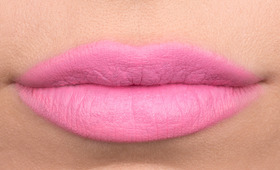
The Lipstick Reviews
Pretty In Pink: The Violet-Pink Lipstick Review
- 756
-

outFit with Kit
AcroYoga Looks Intimidating! Would You Give It A Go?
- 316






